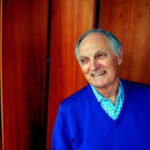Even though I don’t much like them, I have to admit that some tips can be useful. Here are three that have been good to me.
- When I talk to an audience, I try to make no more than three points. (They can’t remember more than three, and neither can I.) In fact, one big point is even better. But three is the limit.
- I try to explain difficult ideas three different ways. Some people can’t understand something the first couple of ways I say it, but can if I say it another way. This lets them triangulate their way to understanding.
- I try to find a subtle way to make an important point three times. It sticks a little better.
Related: 10 Ways to Be a Better Communicator
But even though I’ve discovered a few tips that have helped, for my money, tips tend to be anemic when they don’t come fortified with experience, or with a vivid story that lets you enjoy a vicarious experience.
I was once asked to write a list of tips on how to communicate well, and I resisted. I finally hammered out three, but they were so snarky I never sent them in:
Tip 1. Beware of tips. Tips are intellectual and often mechanical. They don’t transform you. An experience transforms you. There’s a stretch of road I’ve driven down many times where I used to ignore the speed limit sign. One afternoon, I got a speeding ticket and I never ignored the speed limit again. The sign was a tip. The ticket was the experience.
Tip 2: Make a personal connection with your audience. Look them in the eye and speak to them as if they’re a close friend and not a multitude. This is, of course, impossible to do just by reading this tip. Experience is what transforms you. (See Tip 1.)
Tip 3. If you can, experience improvisation. It will focus you on the other person. Improv games allow most of the tips about public speaking to become second nature, rather than forced and mechanical. A common tip advises you to vary the pace of your talk. Improv puts you so in touch with the audience that varying your pace happens automatically. You do it without thinking, which is the only way it will be effective. Trying to follow tips, rather than letting behavior emerge from the experience of improvisation, can actually make a talk more wooden. You see it in the pauses speakers take when they try to apply the tip to pause every few sentences. During these mechanical pauses, the air is dead. But when an improviser takes a pause, something meaningful is happening. She pauses because she’s watching the audience to see if they understand her, and she’s actually thinking of what she ought to say next. The pause is filled with something that’s happening between her and the audience. She’s alive.
Related: 8 Ways to Master the Art of Communication
Excerpted from If I Understood You, Would I Have This Look on My Face? by Alan Alda. Copyright 2017 by Alan Alda. Excerpted by permission of Random House. All rights reserved. No part of this excerpt may be reproduced or reprinted without permission in writing from the publisher.


